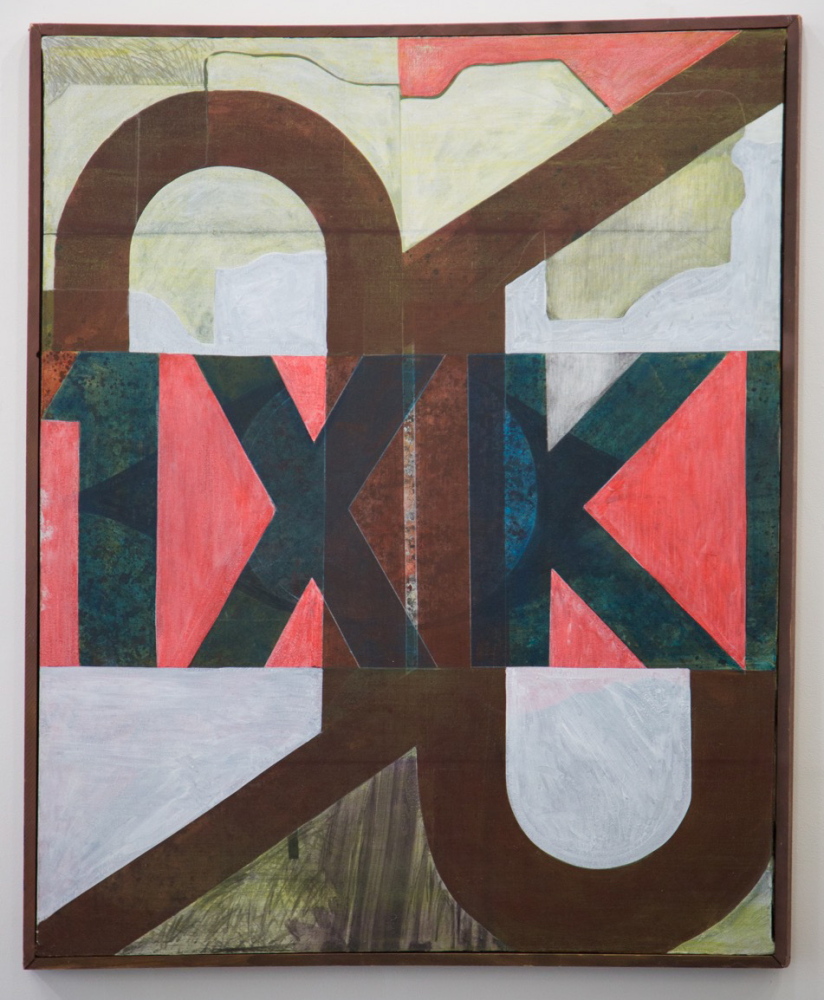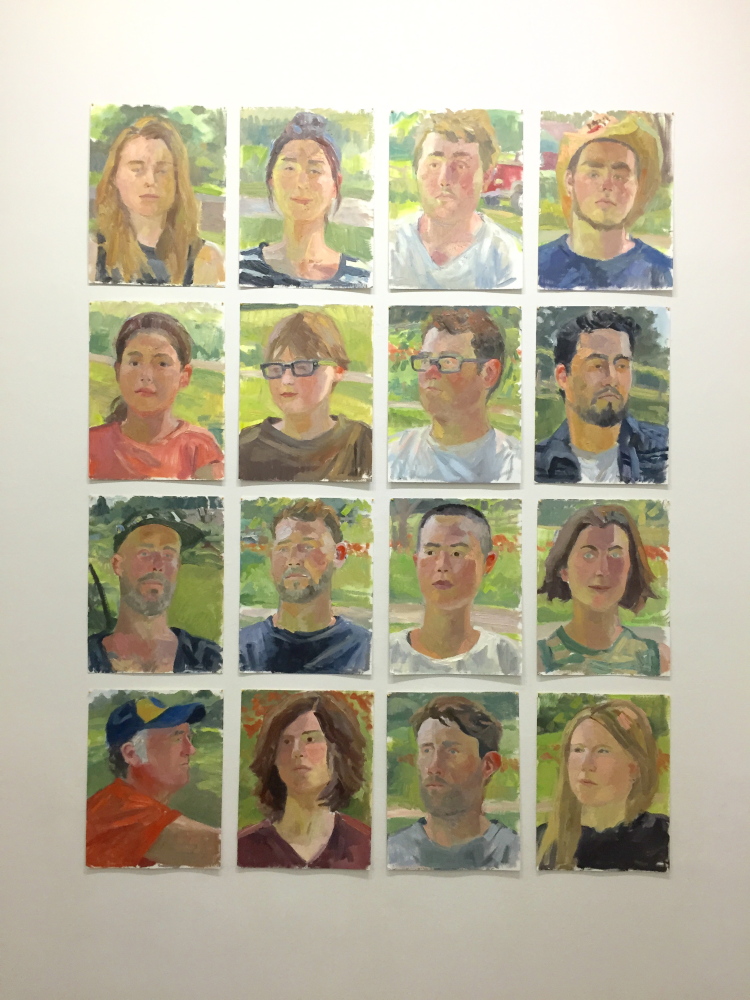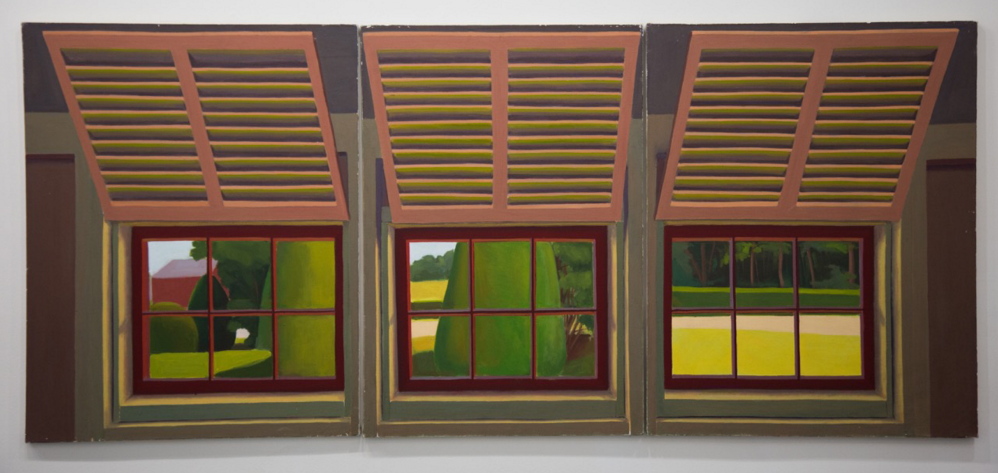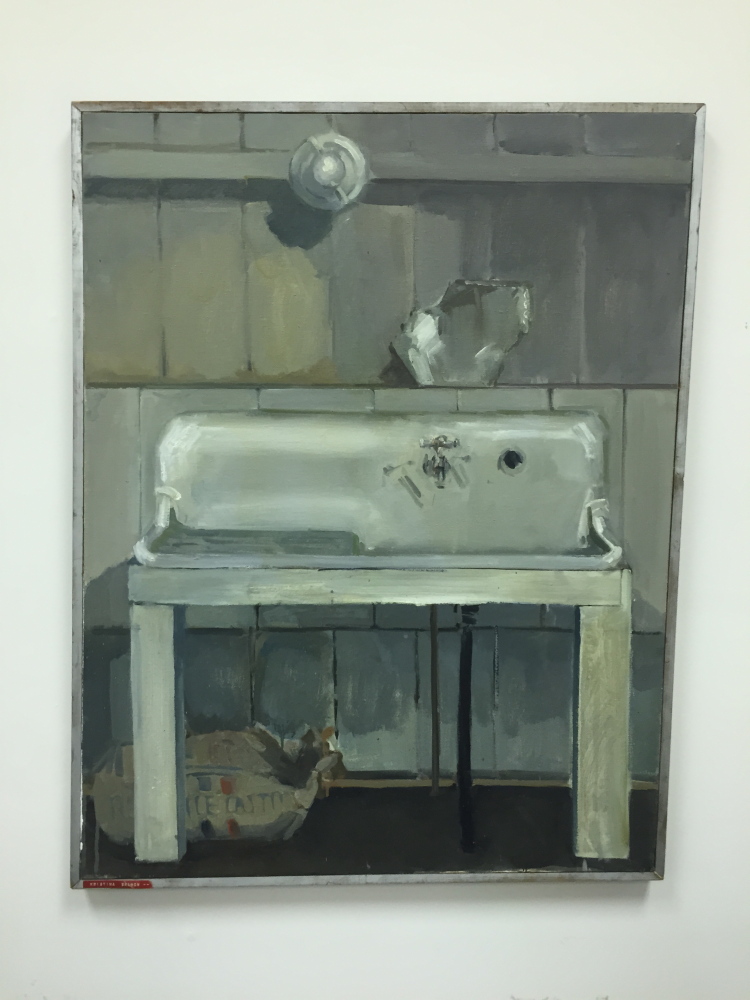“Inside/Outside: Works from the Skowhegan Archives” at Common Street Arts in Waterville could be remembered as the most important exhibition in Maine of 2015, but not because of the specific works of art on the walls. The show is challenging and exciting, but there is much more to the story.
The Skowhegan School of Painting and Sculpture is possibly the most internationally renowned institution in Maine. No doubt some smirking readers will think of Bowdoin or Colby and take this for overly dramatic hyperbole, but I went to Bowdoin, my family was deep in the Colby community and I am absolutely serious.
During a lecture at the Portland Museum of Art, painter David Driskell, the painter who bought a home in Falmouth in the early 1950s after falling in love with Maine during his time at Skowhegan, recounted his visit to South Africa when he was the first black person to have a solo exhibition at the South African National Gallery. He gave a keynote lecture there and, during the question-and-answer session, to Driskell’s great surprise, all the artists wanted to hear about was Skowhegan.
Few Mainers realize Skowhegan is the most prestigious painting residency in America. And that has long worked for Skowhegan. Haystack Mountain School of Arts and Crafts, which also has a massive international reputation, is similarly unknown, because it is dedicated to working and teaching rather than presenting art to the public. But since Mainers can attend Haystack workshops, it’s somewhat less of a secret.
Skowhegan, on the other hand, is only now opening its doors, and “Inside/Outside” is one of those doors. Whether or not it is a wise policy shift, it is important.
At the opening of the exhibition, I talked to several artists and Michelle Grabner, who curated the show and who is a professor at the School of the Art Institute of Chicago and a 2015 faculty resident at Skowhegan. As an art critic, I write about the public experience, which is virtually always about the art rather than artists or curators, but this was a rare chance for the public to meet and talk to Skowhegan participants and faculty during their summer sessions at a Maine gallery. Skowhegan also invited the public to visit for a day this year. These events mark an extraordinary shift, and I hope these are merely the first of many such opportunities for the art-interested Maine public.
Among many feathers in her cap, Grabner co-curated the 2014 Whitney Biennial. She is concerned about top-down culture and she’s able not only to talk about it, but, as a major-league hitter, she is doing something about it. Grabner was very clear that her motivation to curate “Inside/Outside” was to “break down hierarchies.”
Grabner’s show is accessible but not simplistic. “Inside/Outside” is gritty, fresh and unapologetically challenging. It features major artists like Charles Lassiter and Janet Fish alongside 2015 attendees. It didn’t have to be that way: Lesser curators would likely have dragged out big name after big name to seek success on the basis of marketing rather than excellence.
Visitors are greeted by a 1969 painting by Thomas Monahan that would look cutting edge in Chelsea today. It features several bands of type-set style figures that come into focus in the middle section with black characters over faded fuchsia, while brown, letter-like figures reach to the top and bottom and away from legibility toward abstraction. (Imagine a young Caio Fonseca doing his ABCs.)
The Monahan not only sets the stage with undeniable strength while pointing toward semiotic (sign systems) concerns, but it offers fair warning that Grabner’s high-energy show is not geared to clear explanation, easily definable content or conceptual one-liners. Skowhegan, after all, is a place where art happens in paroxysms.
The old-school selections are certainly worthy. Wade Frame’s 1951 ever-dark “Loons” uniquely captures the spirit of the eerie-night-song creatures. Gail Campbell’s 1979 painting of three louvered windows is a charmingly witty attempt to surreptitiously bring the irrational architecture of M.C. Escher to comfortably luscious landscape (when is a window not a window?).
Kristina Branch’s 1970 scene of a studio sink is mesmerizing in its deliciously textured, uncanny geometries. And E. Barry Shils’ 1973 painting “Skowhegan Class Photo” with its hundred or so characters is too bold and fascinating to pass by quickly; and it rewards a longer look.
To the viewer, Samantha Jorgensen’s grid of 16 portraits may appear as a 2015 response to Shils. It has far less intensity, but it reveals a shared sense of energy and moment. Jorgensen isn’t copying Shils; rather, they set out to essentially do the same thing, except that Jorgensen is making individual portraits on 12-by-16-inch sheets instead of on a single 6-foot canvas. It makes for interesting differences when the individual portraits succeed or fail: For example, each is a varied facet of Shils’ comprehensive work while any weaker work by Jorgensen is a failed painting.
The 2015 work is generally interesting and it fits what you would expect to see in places like Williamsburg or the Brooklyn neighborhood Dumbo. A few pieces, however, reach out with genuine intensity. For example, Calvin Siegel’s plastered relief feels like a wizened, ancient architectural artifact. Sarah Mikenis’ poofy Flashe painting with neon-ish, lemon-yellow edges and polka dots feels like a hipster update of Robert Rauschenberg’s 1955 “Bed.” And, installed alone in Common Street Arts’ old bank vault, Linnea Rygaard’s “Jämnsides” pushes its thickly painted geometrical systems into a centrifugal spin so impressive it could have made Escher himself overbalance.
While “Inside/Outside” was undoubtedly a major undertaking for Grabner during Skowhegan’s full-speed summer, its lack of precedent clouds our ability to contextualize it. While the title “Inside/Outside” hints at the pairing of literal painting objects (Kant’s “ergon”) and their broader framing contexts (Derrida’s “parergon”), it’s a new door in for the Maine art communities, opened to intentionally break down extent hierarchical distinctions. And to have such a show – supported by Colby College, which features Maine’s largest and best art museum – open in the first days of Common Street Arts’ new programming director, Kiki Nigals, is particularly exciting.
There is a lot to see right now in Waterville.
Freelance writer Daniel Kany is an art historian who lives in Cumberland. He can be contacted at:
dankany@gmail.com
Send questions/comments to the editors.






Success. Please wait for the page to reload. If the page does not reload within 5 seconds, please refresh the page.
Enter your email and password to access comments.
Hi, to comment on stories you must . This profile is in addition to your subscription and website login.
Already have a commenting profile? .
Invalid username/password.
Please check your email to confirm and complete your registration.
Only subscribers are eligible to post comments. Please subscribe or login first for digital access. Here’s why.
Use the form below to reset your password. When you've submitted your account email, we will send an email with a reset code.